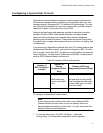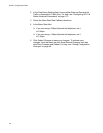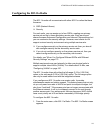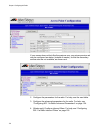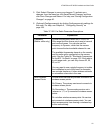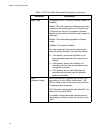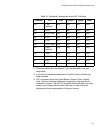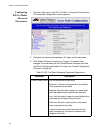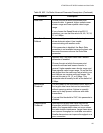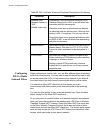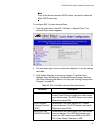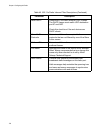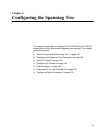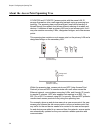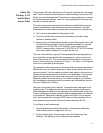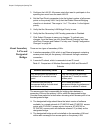
AT-WA7500 and AT-WA7501 Installation and User’s Guide
125
Data Rate Choose the rate at which the access point
transmits data. In general, higher speeds mean
shorter range and lower speeds mean longer
range.
If you choose the Speed Mode to be 802.11
compliant, you can set this rate to 54, 48, 36, 24,
12, or 6 Mbps.
Allow Data Rate
Fallback
Determines if you want the radio to drop to a
slower data rate when it has trouble
communicating with another radio.
If this parameter is disabled, the Basic Rate
parameter is not available because the basic rate
becomes the same value as the Data Rate
parameter.
Basic Rate Appears only if the Allow Data Rate Fallback
parameter is enabled.
Choose the rate at which the access point
transmits multicast and beacon frames. In
general, higher speeds mean shorter range and
lower speeds mean longer range. Do not set this
rate higher than the maximum rate at which your
end devices can receive multicast frames. You
can set this rate to 24, 12, or 6 Mbps. This
parameter should usually be left at the default of
6 Mbps.
Reservation
Threshold
You may need to set a threshold value, which is
the largest data frame that can be transmitted
without reserving airtime. Airtime is normally
reserved to help prevent collisions with other
transmitters.
If you set this threshold to 2347, this parameter is
disabled.
Fragmentation
Threshold
Specifies the largest data frame that can be
transmitted without fragmentation. On certain
radios, the fragmentation does not occur unless
the radio detects interference. Larger frame sizes
can improve throughput on a reliable connection.
Smaller frame sizes can improve throughput on a
poor connection.
Table 39. 802.11a Radio Advanced Parameter Descriptions (Continued)
Parameter Description



